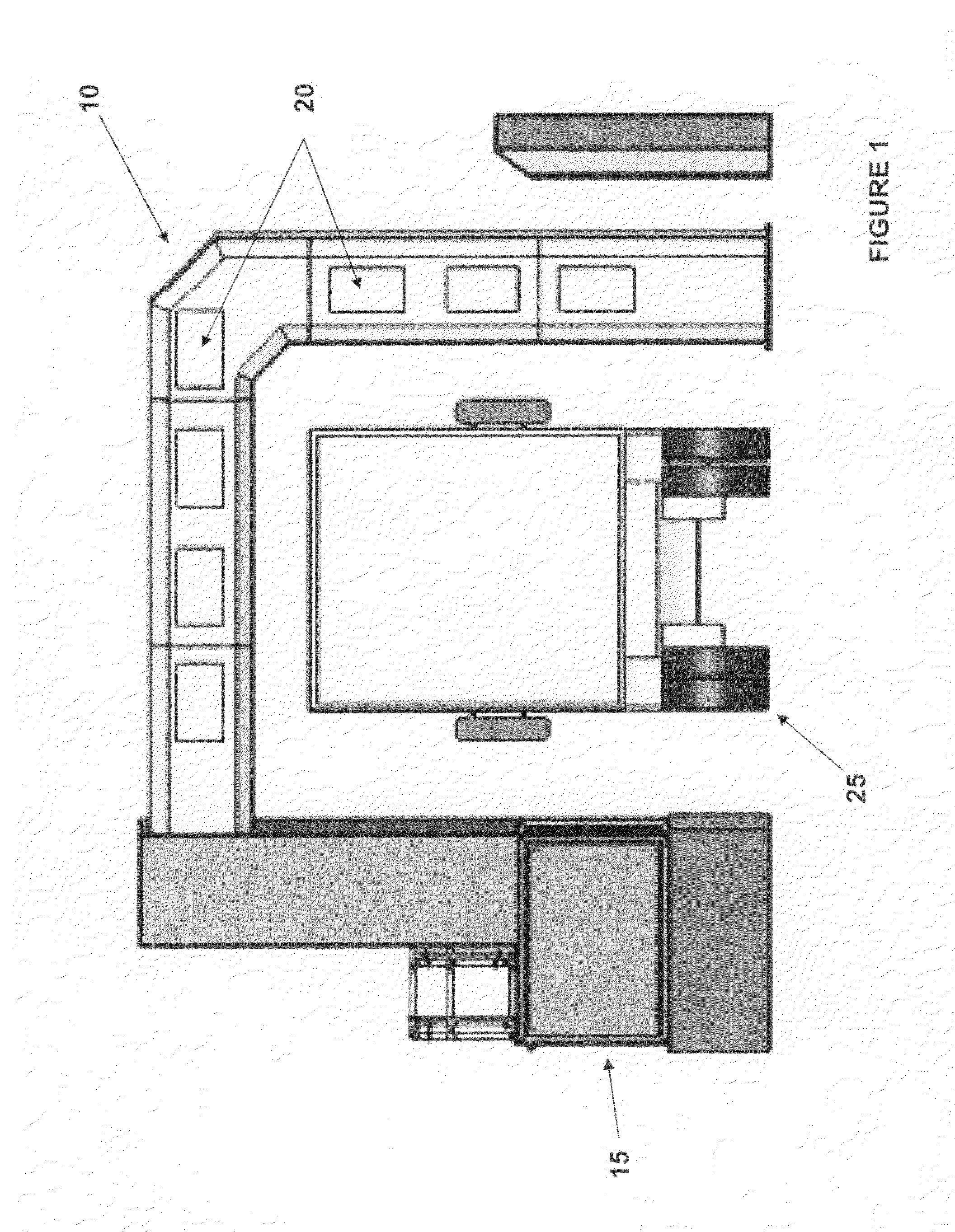System and method for normalization and calibration of an imaging system using a variable thickness filter
- Summary
- Abstract
- Description
- Claims
- Application Information
AI Technical Summary
Benefits of technology
Problems solved by technology
Method used
Image
Examples
Embodiment Construction
[0016]The present invention is best described in the context of a larger device invention 10 for imaging the contents of a target, e.g., vehicle, shown in FIG. 1. The exemplary device 10 includes, among other components, a source assembly 15 and at least one detector 20 for measuring the intensity of radiation transmitted through the target 25. The source assembly 15 emits penetrating electromagnetic radiation, e.g., x-ray or gamma radiation. Included in source assembly 15 is a collimator subassembly 30 as shown in FIG. 2. The collimator subassembly 30 acts on x-ray or gamma radiation emitted from source 28. For example, in a particular embodiment, x-rays are generated by a betatron. Generally, the x-rays generated by the betatron result in a broad, cylindrically symmetric beam. The device 10 requires a narrow, fan-shaped beam of x-rays. Accordingly, the system utilizes a collimator, usually in the form of a slit, that shapes the beam. The slit is located in front of the x-ray sourc...
PUM
 Login to View More
Login to View More Abstract
Description
Claims
Application Information
 Login to View More
Login to View More - R&D
- Intellectual Property
- Life Sciences
- Materials
- Tech Scout
- Unparalleled Data Quality
- Higher Quality Content
- 60% Fewer Hallucinations
Browse by: Latest US Patents, China's latest patents, Technical Efficacy Thesaurus, Application Domain, Technology Topic, Popular Technical Reports.
© 2025 PatSnap. All rights reserved.Legal|Privacy policy|Modern Slavery Act Transparency Statement|Sitemap|About US| Contact US: help@patsnap.com



